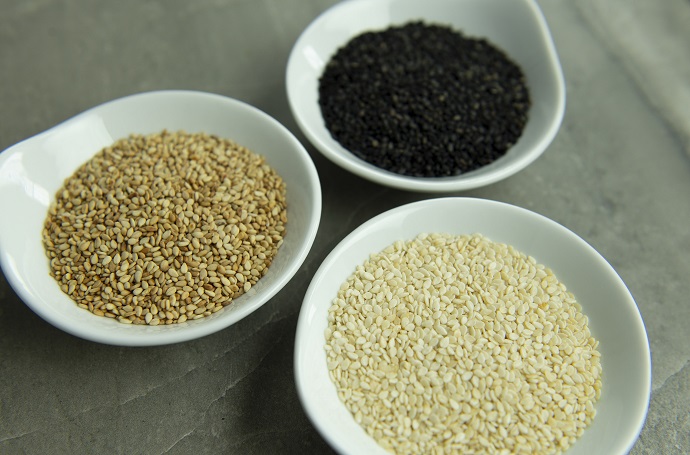The Prevalence of Food Allergies at SAGE
Nutrition, Allergies
As a dining service that primarily serves children ages 5-18 in approximately 275 independent schools in North American states and provinces, including British Columbia, we know first-hand about the severity, prevalence, and rising incidences of food allergies in recent years. Feeding food-allergic students, some of whom may be navigating food choices independently for the first time, is a tremendous responsibility that we take very seriously. To better understand our food-allergic population, we conduct an annual client survey about allergies to...
FROM OUR DIETITIANS: Making the Case to Add Sesame to the List of Major Food Allergens in the U.S.
Nutrition, Allergies
As a dining service that primarily serves children ages 5-18, we know firsthand about the severity, prevalence, and rising incidence of food allergies among young people. And we know that for people with food allergies, clear and accurate labeling is a life or death issue. According to the Food Allergen Labeling and Consumer Protection Act of 2004 (FALCPA), the U.S. Food & Drug Administration (FDA) identifies the eight most common allergenic foods as milk, eggs, fish, crustacean shellfish, tree...
Sourcing A Favorite Fish for Health and Environmental Benefits
Nutrition, Locally Sourced
Tilapia is a favorite in lots of households and many of the communities we serve—it’s often the first fish kids eat because of its mild flavor and appealing consistency. It’s low in mercury, nutrient-rich, cost-efficient, and a good source of lean protein. However, there have been concerns about tilapia farming practices and their potential health and environmental impact. To address these points, SAGE will source our tilapia exclusively from a responsible and sustainable supplier, Regal Springs©. Regal Springs© raises lake-grown...
Managing a Food Allergy While Traveling
Nutrition, Allergies
Roughly 50 million people in the U.S. travel over the Thanksgiving holiday, and more than 15 million people in the U.S. have with food allergies. That means this holiday season, there are a lot of Epi-Pens® going through security. And though there’s comfort in these numbers, people with food allergies and their family members are never fully relaxed or off duty when traveling. They’re well aware of the fact that most fatal food allergic reactions are triggered by...
From Our Dietitians: Is Soy Safe?
Nutrition
As an increase in environmental, ethical, and health concerns has led to a boom in plant-based eating, soy has taken an increased role in the food industry and in North American diets. In fact, more than 25% of Americans eat soy foods or beverages once a week or more often. With greater prominence comes greater scrutiny. Although it’s FDA-approved, soy has been accused of jump-starting puberty and causing breast cancer. So what’s the deal—is soy safe? Where Is Soy? Edamame...
From Our Dietitians: SAGE’s Food-First Philosophy
Nutrition, Performance Spotlight
There’s a billion-dollar industry selling energy bars and drinks, protein powders, pills, and supplements. That’s why you’ll find hundreds of options and many opinions for or against them. Generally speaking, we’re against them. Although their use is widespread, supplements can be dangerous for both an athlete’s health and athletic career. Companies don’t have to prove that supplements are safe or effective before they’re made publicly available. Studies have shown that 15-25% of supplements contain an unlabeled substance banned by the...
Fueling for Performance: Nutrition for Athletes
Nutrition, Performance Spotlight
Think fast! You’ve been asked to bring a snack to the soccer tournament for your child’s team. What do you bring? What you choose could impact their performance. Athletes have different nutritional needs than their less active peers. Experts agree that adequate, well-timed nutrition enables and enhances intensive athletic performance. It maximizes gains in speed, strength, and agility; shortens the recovery period; provides nutrients that increase health; and reduces the risk of injury and illness. Pay attention to the info...
Performance Spotlight™ for Athletes
Nutrition, Performance Spotlight
SAGE has created Performance Spotlight™ to address athletic nutrition at school. Crafted by our Registered Dietitians, our program is based on recommendations by the United States Olympic Committee, NCAA, and other sports nutrition associations. There are three tenets of our program are education, meal guidance, and recipes. The education component centers on the what, when, and why so that the students can really understand what this nutrition will do for their bodies and performance. Meal guidance addresses the question “What...





